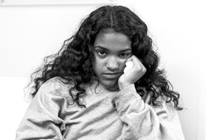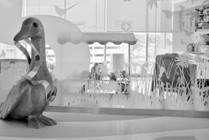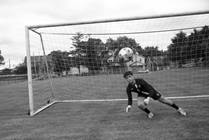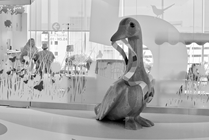Search Results
Viewing: 761-770 of 1457 | All
News
RSV, COVID-19, Colds and Influenza: What parents need to know this respiratory season
Respiratory viral season is here. Because of common and overlapping symptoms, distinguishing between respiratory illnesses can be confusing for parents and caregivers. Questions about vaccination and the latest guidance about what to do to help prevent spread of respiratory viruses add another layer to the confusion.

Condition
Vomiting
Vomiting (throwing up) is most often caused by a virus or stomach bug. Some serious illnesses may also cause vomiting. Vomiting caused by a virus usually lasts only a couple of days. It can often be treated at home.

Condition
Enlarged Adenoid
The adenoid is a structure located at the junction of the nose and throat (nasopharynx) that functions in the immune system. Adenoids sometimes become enlarged during childhood and the increased size may cause problems.

Condition
Congenital Lung Lesions
Congenital lung lesions are a group of conditions where part of the lung has an abnormal growth or mass. Congenital pulmonary airway malformation (CPAM), bronchopulmonary sequestration and congenital lobar emphysema are the most common types of congenital lung lesions.
Slipped Capital Femoral Epiphysis (SCFE)
Slipped Capital Femoral Epiphysis (SCFE) is a hip disorder that involves the epiphysis (eh PIFF I siss). This is the growing portion or ball on the top part of the femur (thigh bone).

Condition
Vertigo
Vertigo is the medical word for the feeling of spinning. Your child may feel like the world is moving, but there is no movement. These feelings come and go.

Condition
Biceps Tendonitis and Tenosynovitis (Distal)
Distal biceps tendonitis is pain at the front of the elbow and upper arm caused by inflammation (swelling) of the biceps tendon. Tenosynovitis is inflammation of the tendon sheath that surrounds the biceps tendon.

Blog
Norovirus: What You Need to Know
Norovirus is a very contagious virus. You can get Norovirus from an infected person, contaminated food or water, or by touching contaminated surfaces. The virus causes the stomach or intestines (or both) to get inflamed. This leads to stomach pain, nausea, diarrhea and vomiting.

Condition
Voiding Dysfunction
If a child over the age of 4 has difficulties holding their urine (urinary incontinence) and physicians are unable to identify an anatomical or neurological cause, they may diagnose the child with voiding dysfunction.

Condition
Back Sciatica
The sciatic nerve is the longest nerve in the body. Sciatica is caused by increased pressure placed on the sciatic nerve, most commonly from a herniated disk.
